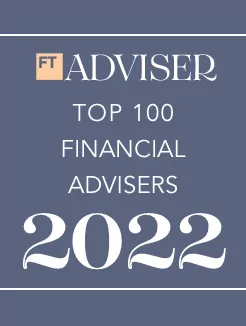The news of the Silicon Valley Bank collapse swept quickly around the world. Charlie Buxton, our Head of Investment Management, takes a look at what happened and what investment implications the downfall is likely to have.
Last week, Silicon Valley Bank (SVB) was taken over by regulators, representing the second largest US bank failure in history.
What went wrong?
SVB saw a tripling of deposits between 2019 and 2021, as the venture capital and technology sector boomed. The bank put that client money to work by investing in longer dated bonds, including 10 year US Treasuries and mortgage back securities. Initially this created positive gains, as the circa 1.6% interest rate was higher than shorter-term deposit rates. However, as Central Banks responded to inflation with a sharp increase in interest rates, the value of those longer dated securities started to fall. The reason: they paid lower interest rates compared to those of similar bonds if they had been issued in the new higher interest rate environment.
Usually, this wouldn’t be a problem because banks typically hold onto bonds for a long time — unless they have to sell them in an emergency. However, Silicon Valley’s customers were largely start-ups and other tech-centric companies who began to need cash. With venture capital funding drying up, companies were unable to secure additional finance for unprofitable businesses and had to tap into existing funds held at SVB.
Initially, the withdrawal of funds wasn’t a problem, but as requests grew, SVB was forced to sell its longer dated assets to meet customer withdrawal requests, at a loss. As SVB customers became more fearful of a bank failure (since their deposits were over the US government-imposed limit on deposit insurance of $250,000) those requests further increased, and the loss eventually rendered the bank insolvent.
Is what happened at SVB systemic?
Within three days, the Federal Deposit Insurance Corporation and state took control of Silicon Valley Bank and guaranteed all deposits, beyond the usual $250,000 federal insurance limit. The Federal Reserve also announced a new lending facility, backstopped by the US Treasury Department, that other banks can draw on to help them meet demands from depositors.
While systemic confidence might take some time to be fully restored, the announcement is an important step. We believe that SVB’s failure is more idiosyncratic than systemic. Compared to the Lehman crisis, the Bank is not leveraged, has no big derivatives exposure and no significant global connections. Most other banks also have much more diversified sources of funding, high capital buffers and lend to a much wider range of industries.
However, last week’s event highlighted the need to carefully assess the lagging impacts of higher rates, particularly when it comes to non-systemically important financial institutions and some other non-banking financial institutions, which lack strict regulation.
Looking ahead
One major consideration for investors is the likely path of interest rates by the Federal Reserve, against the backdrop of still elevated levels of inflation. Given the speed at which SVB folded and the heightened concerns around interest rate risk across the banking sector, it now seems unlikely that the Fed will risk any further form of market turmoil; the market is pricing in a 50% chance of an interest rate hold and the other 50% at 25 basis points.
This is very different to expectations even from last week, when the Fed had reiterated its stance on the likelihood of a more hawkish approach in the future. Whatever the outcome of next week’s decision, inflation still looms large – 6% year on year – and rates will likely have to remain elevated for longer. In this instance, our preference remains for value over growth and for keeping portfolios as diversified as possible, in an effort to guard against any further market volatility.
To discuss any aspect of your investment portfolio please contact your nearest office.




